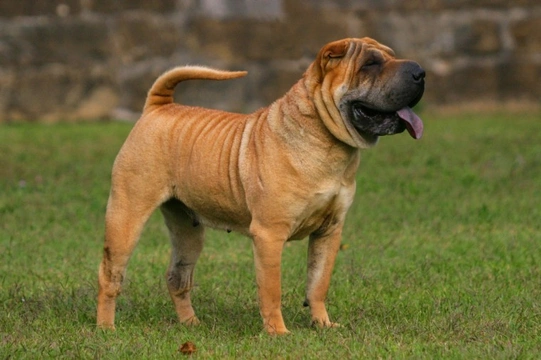
Health and care of the Shar Pei dog
The Shar Pei is an unusual Chinese breed of dog that is distinctive due to its deeply wrinkled body and dark blue tongue that can appear almost black. When born, the skin of the dog appears almost too large for its body, but as the dog grows, their wrinkles spread out to make for a loose, but more appropriate fit!
Previously one of the rarest breeds of dog in the world, the Shar Pei is becoming ever more popular internationally, including within the UK. Their distinctive appearance and strong sense of loyalty to their families has led to them becoming popular with owners of all types, but the Shar Pei can be a challenging dog to own, and is prone to some hereditary health problems too.
In this article, we will look at the health and care requirements of the Shar Pei in more detail. Read on to learn more.
Caring for the coat and skin of the Shar Pei
The coat of the Shar Pei can be seen in three different variants:
- Horse coat, which is prickly and rough, feeling harsh if stroked in one direction, but smooth in the other.
- Brush coat, which is rather smoother to the touch, and slightly longer than the horse coat.
- Bear coat, which is not a permitted permutation with every Kennel Club, and which was introduced to the breed due to the addition of other breed lines. The bear coat is defined by being longer than one inch at the withers, and is otherwise similar to the brush coat.
While the coat of the Shar Pei itself is short and straight, and so relatively low maintenance, the wrinkled skin of the breed does require some attention to keep it clean and healthy. Due to the fact that the skin is loose and falls in folds, it can easily trap dirt, debris and moisture, as well as harbouring bacteria.
This means that the Shar Pei owner must regularly clean and dry the skin folds, checking for any sores or abrasions and taking care never to leave moisture within the skin folds. The same is true for the short, brachycephalic face of the breed, which also requires regular cleaning with a soft cloth, and thoroughly drying to prevent sores and bacteria from thriving.
Shar Pei longevity
The Shar Pei is not among the most long lived of dog breeds, with an average lifespan of between seven and ten years. Some dogs of the breed will live well into their mid-teens, however, and the quality and breeding of the dog in question will go a long way towards predicting its potential lifespan.
When the breed was first exported large-scale from China in the 1970’s, breeding programmes internationally but notably within the USA were not well prepared to produce healthy dogs, and the health and longevity of the breed as a whole suffered from inbreeding and overtyping for the breed’s perceived desirable traits. This is less of a problem within the UK, however, and British Shar Pei dogs tend to be longer lived than their American counterparts as a whole.
Shar Pei health issues
The Shar Pei is particularly prone to a range of health issues that have a hereditary element to them, meaning that many dogs of the breed will be afflicted with some form of genetic problem, and also leads to them being rather costly to insure.
Skin infections including allergies and problems when dirt and bacteria builds up within the skin folds is a common problem within the breed.
Familial Shar Pei fever, or FSF, is a congenital condition within the breed that causes short, sudden onset fevers that can last from one to three days in duration. The fevers tend to be recurrent, and can become progressively more frequent and intense in some dogs.
Amyloidosis is a condition that is thought to be related to FSF, and affects the liver and kidneys, causing eventual renal failure in affected dogs.
There are no tests available to identify FSF prior to an attack, but it is a binary condition, and the Shar Pei is either born with a propensity to the condition, or without it. Around 23% of all Western Shar Pei dogs are thought to be affected by the condition, but it is often manageable and afflicted dogs can often lead an otherwise normal life.
Entropion, which is a condition of the eyes, is another common Shar Pei problem, leading to the eyelashes growing inwards and irritating the cornea of the eye. The condition is painful and irritating, and can eventually lead to blindness. However, surgical correction to realign the eyelids can correct the problem if identified.
The inner ear structure of the Shar Pei also makes the breed rather prone to yeast infections of the ears, and also makes cleaning the ears thoroughly rather challenging.
Finally, a deficiency of vitamin B-12 is a very common problem within the breed as a whole, and is suspected to be another genetically inherited condition.



